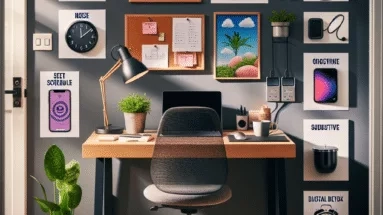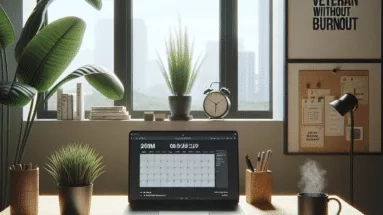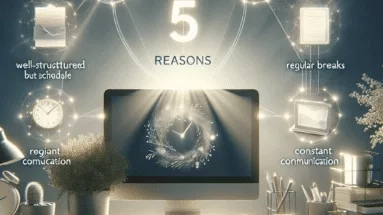
How to Solve Common Work From Home Challenges in Just One Day
Creating a Productive Work Environment Designate a Specific Workspace One of the first things I did

Creating a Productive Work Environment Designate a Specific Workspace One of the first things I did

Step 1: Setting Clear Goals Understanding What You Want to Achieve First things first, you’ve got to know what you’re aiming for. It's kind of like setting a GPS destination; if you

Create a Dedicated Workspace Choosing the Right Spot Alright, let’s talk about the place where you’re gonna be grinding it out. Picking a dedicated

It Decreases Productivity Understanding Productivity Drops As someone who's been there, I can tell you that when I first started working from home, I thought I could juggle it all—emails, phone calls,

Understanding My Work Habits Identifying My Peak Productivity Hours When I first transitioned to working from home, I thought I could simply carry over my office routine. But as it turns out,

Flexibility is Key Understanding Work-Life Balance

Establish a Dedicated Workspace Create a Productive Environment First things first, you gotta have a space that’s just for work. If you’re plopping down

Burnout: The Silent Productivity Killer Understanding Burnout We’ve all heard of burnout, right? You keep pushing through your to-do list, but as the days turn into weeks, the enthusiasm fades into sheer

Establishing a Dedicated Workspace Choosing the Right Spot One of the first things I learned while working from home is the importance of a

Establish a Morning Routine Wake Up Early Starting my day an hour earlier than usual has been a complete game changer. It gives me

Create a Functional Workspace Find Your Perfect Spot Starting off, I had a hard time figuring out where to set up shop at home.

Understanding the Signs of Burnout Recognizing Your Limits When I first transitioned to working from home, I thought it would be a breeze. No

Procrastinating on Important Tasks

Evaluating My Current Setup Recognizing the Comfort Zone When I first started working from home, I was over the moon. No commute, comfy clothes, and the fridge was just steps away! But

Flexibility in Work Hours The Freedom to Choose One of the coolest things about working from home? The flexibility. I mean, who doesn’t love being able to set their own hours? Personally,

Establishing a Designated Workspace Create a Comfortable Environment One of the first things I learned when I started working from home is the importance of having a comfortable workspace. It’s easy to

Finding Your Ideal Work Environment Creating a Productive Space When I first started working from home, the biggest game-changer for me was setting up

1. Establishing a Dedicated Workspace Creating an Inviting Environment When I first started working from home,

Establishing a Structured Daily Routine